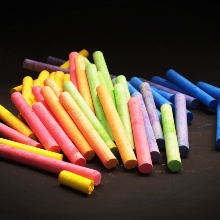Open Thesis Projects
--- German only --- (to be updated)
Literatur: Eder et al. 2016
Ansprechpartner: Dr. Ingrid Weiss
--- German only --- (to be updated)
Literatur: Weiss et al. 2013
Ansprechpartner: Dr. Ingrid Weiss
--- German only --- (to be updated)
Literatur: Schönitzer & Weiss 2007
Ansprechpartner: Dr. Ingrid Weiss
Biological cells are not onle able to sense and recognices biochemical signals but also mechanical properties of their environment, such as the rigidity of their extracellular matrix (ECM). Interestingly, cells are optimized to react differently to their natural environment. An example are cardiomyocytes (heart cells). When cultured in a self-similar mechanical environment (rigidity ~ 12 kPa), function and morphology optimize during the development into a confluent tissue. Similar optimization processes are observed in other muscle cells, such as C2C12 cells. The investigation of mechanosensing and signaltransduction dynamics in muscle cells is based on in vitro observations on ECM models, g.h. hydrogels. In particular we focus on the rigidity of the hydrogel as well as the adhesion functionalization.
We are particularily interested in dynamic regulation processes of muscle cells, their interaction between each other and controll strategies. Typical applied methods are cell biology and complex numerical analysis methods.
Literature: Hörning et al. Biophys. J. 2012, Hörning et al. Scientific Reports 2017
Person in charge: Dr. Marcel Hörning
In a recent study ["Three-dimensional cell geometry controls excitbable membrane signaling in Dictyostelium cells"], we showed that PIP3 lipid distributions on the membrane of Dictyostelium cells can show various dynamics, by observing and analysing the entire three-dimensional membrane over time. Those dynamics can be classified as spiral waves, standing waves and oscillations, similar as observed in other excitable systems. Despite the groundbreaking findings a lot of questions remain to be answered. One of these questions point to the signaling dynamics on different membrane compartments.
This investigation is based on image and signal analysis of already observed data, as well as statistical evaoluation.
Literature: Hörning and Shibata, BioRxiv, 278853, 2018
Person in charge: Dr. Marcel Hörning
Special lectures
Lecturer: Dr. Ingrid Weiss
Schedule: Sommer-Semester (annually)
Scale: 12 SWS (lecture + practical exersice)
Abstract of the lecture:
--- German only --- (to be updated)
Link to the lecture: @CAMPUS



